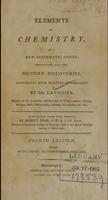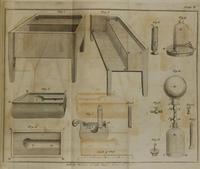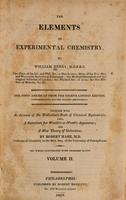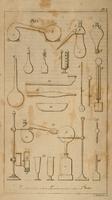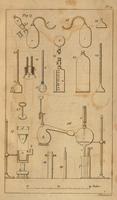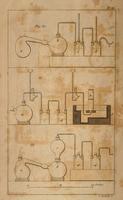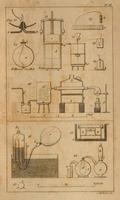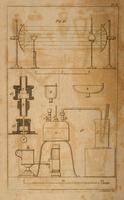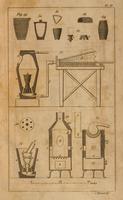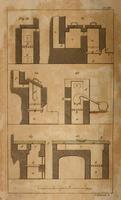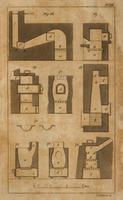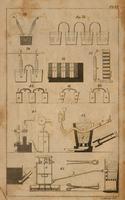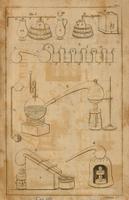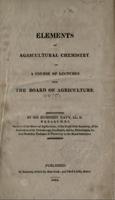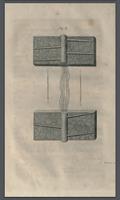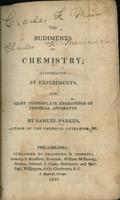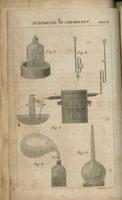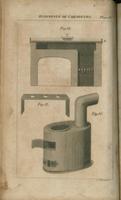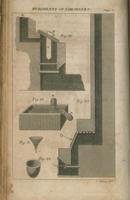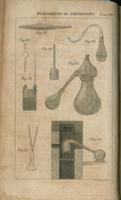Part 14. Chemistry (Lavoisier, Davy, Henry, and Parkes)
A main theme of the Cornelius Tiebout Engravings website is the development of American independence, especially from the perspectives of publishers and their books, and most especially through the illustrations in those books by one of the young nation's foremost engravers. It should be kept in mind that American editions of books that had already been published in London or Edinburgh required American engravers to re-draw and engrave illustrations that were in the British earlier editions.
During Tiebout's lifetime, Mathew Carey (1760-1839, born in Dublin) owned the company that "towered above them all". One analyst notes that "The number of books he published from 1785 to 1821—an estimated eleven hundred titles—is one measure of his success." (James N. Green, Mathew Carey: Publisher and Patriot, Philadelphia, 1985; quoted in Virginia L. Montijo, "Reprinting Culture: Book Publishing in the Early Republic", Master's thesis, College of William and Mary, 2001).
In Literary Publishing in America 1790-1850 (Philadelphia, 1959), William Charvat writes that "If a writer was determined to get the widest possible distribution … he took his book to New York or Philadelphia—preferably Philadelphia, and most likely to Mathew Carey. In the NewYork-Philadelphia axis, literary traffic—and writers—moved briskly, in both directions. A number of publishers had offices in both towns. …" Tiebout himself was one of several engravers who moved (in 1800) from New York to Philadelphia.
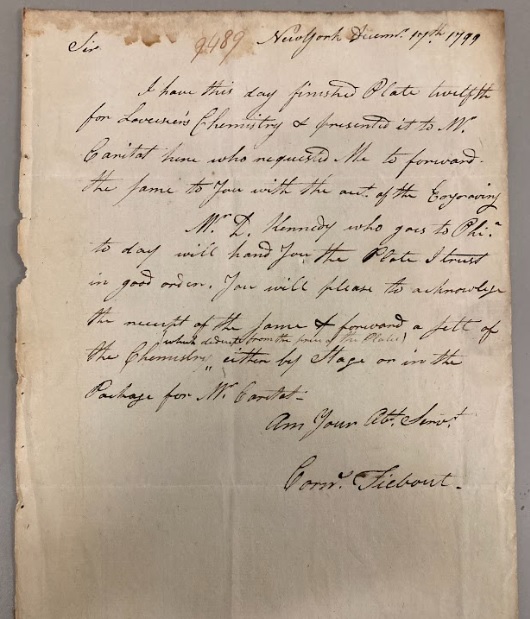
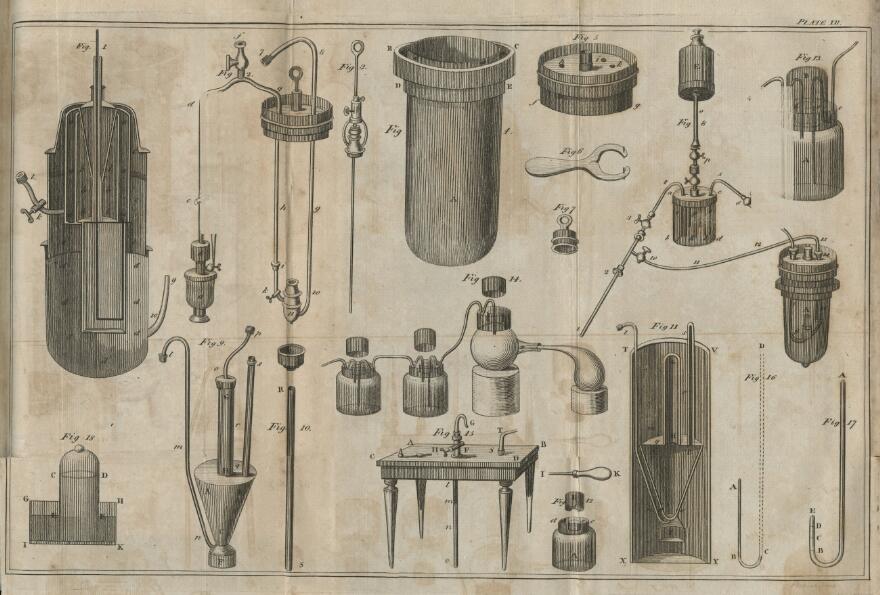
Tiebout's signature, with "T" resembling "P" is discernible (with zooming) in the lower right corner.
Here in Part 14, Cornelius Tiebout engravings are represented by four books, as follows:
1. Antoine Laurent Lavoisier (1743-1794), Elements of Chemistry: in a Systematic Order, Containing all the Modern Discoveries; Illustrated with Thirteen Copperplates, published in Philadelphia in 1799 by Mathew Carey, and by Carey in New York in 1801 and 1806. This fourth edition (following editions published in France and Great Britain) can be viewed online: National Library of Medicine. The 13 plates are found at the end of the book. Plates V and XII are signed by Tiebout, and plates II and IV by Robert Scot (1744?-1823). The other nine plates are unsigned. It seems likely that none of these others was engraved by Tiebout, because the relevant Carey account books refer only to plates V and XII. The specific record can be viewed here: 271315_b06_f15_0016.tif; look for the penciled-in number 5401 and date of 17 December 1799.
Plates in Lavoisier's Elements of Chemistry
Plate V: 13 figures of tub, ball glasses, retorts, and vessels for handling mercury
Plate XII: 18 figures of apparatus for experiments with combustion of oils
2. Sir Humphry Davy (1778-1829), Elements of Agricultural Chemistry, published by Eastburn, Kirk & Co., New York; and Ward & Lilly, Boston, 1815. /p>
Plate 11: Part of a leaf of a vine magnified and cut to show the treacheæ. Details about Plate 11 appear in a footnote on page 57. Most of the other plates in this book are unsigned. See Internet Archive.
3. William Henry (1774-1836), The Elements of Experimental Chemistry, two volumes, published by Robert Desilver, Philadelphia, 1819. This is the first American edition based on the eighth London edition. It can be viewed online: Hathitrust
Plates in Henry's Elements of Experimental Chemistry
Plate I: 16 figures of glass alembic, separator, thermometers
Plate II: 12 figures of gas funnel, gas receiver, eudiometer
Plate III: 3 figures of variations of Woulf's apparatus
Plate IV: 12 figures of variations of Cuthbertson's apparatus, galvanic trough, gazometer
Plate V: 6 figures of apparatus for showing radiation of caloric, for obtaining facts about latent caloric, etc.
Plate VI: 13 figures of crucibles, muffle, stands, portable blast furnace
Plate VII: 6 figures of sections of furnaces of chemical laboratories
Plate VIII: 9 figures of furnaces, reverberatory, enameling, portable, wind, etc.
Plate IX: 11 figures of apparatus for obtaining oxygen and hydrogen, for gas firing by electricity, for procuring potassium from potash and iron filings
Plate X: 8 figures of Glauber's apparatus for distillation, Wollaston's cryophorus, table furnace
4. Samuel Parkes (1761-1825), The Rudiments of Chemistry, Illustrated by Experiments and Eight Copperplate Engravings of Chemical Apparatus, published by Bradford & Inskeep, Philadelphia, 1810. Four plates were engraved by Tiebout, and four by Benjamin Tanner.
Plates in Parkes's Rudiments of Chemistry
Plate II: Figures 2, 8, 9, 10, 11
Plate IV: Figures 14-16
Plate V: Figures 18-22
Plate IV: Figures 27-34

